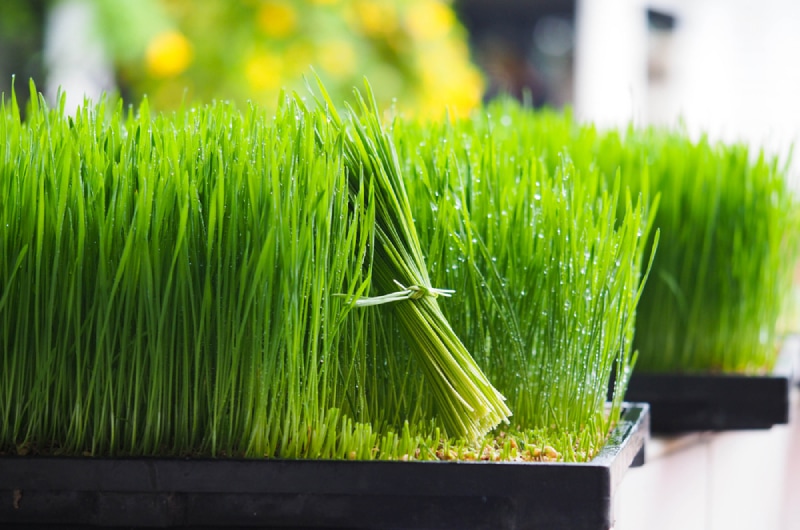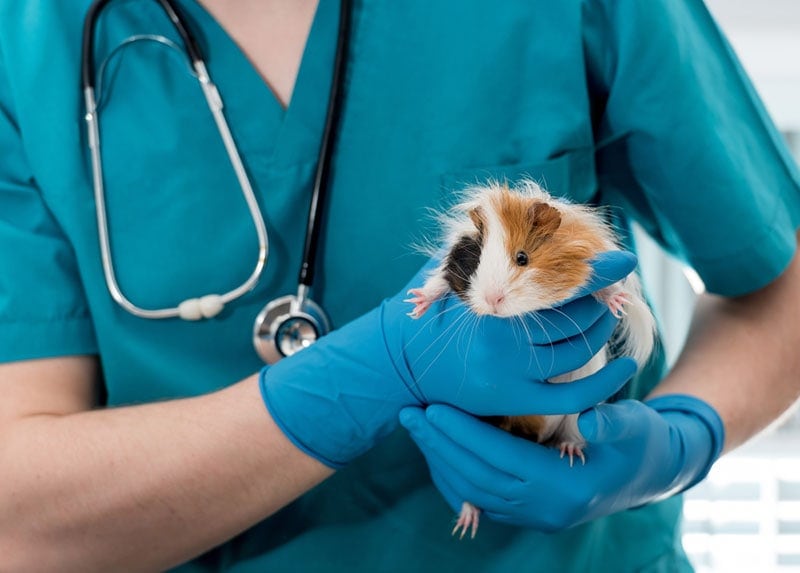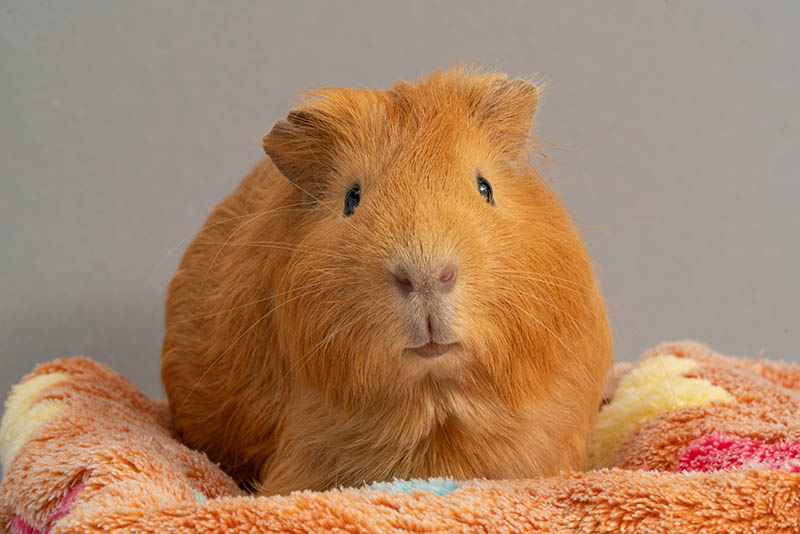Can Guinea Pigs Eat Wheatgrass? Vet-Reviewed Facts & Safety Guide
By Ed Malaker
Updated on

Click to Skip Ahead
Guinea pigs are fun pets that usually enjoy being handled and are easy to maintain. They eat primarily hay and similar grasses, along with fresh vegetables and the occasional fruit, which might cause you to wonder if they can eat wheatgrass. Fortunately, guinea pigs can eat wheatgrass but you must take precautions. Keep reading as we list the pros and cons of feeding this food to your pet and discuss the best way to serve it.
The Guinea Pig Diet
Hay
Guinea pigs are herbivores that eat only plant matter. The bulk of their diet should consist of high-quality hay. Timothy hay and orchard grass hay are two popular options that provide essential fiber, which can aid in digestion. Hay is also important for wearing down guinea pigs’ continuously growing teeth, so they should have constant access to it.
Fresh Vegetables
In addition to hay, guinea pigs should receive a daily serving of fresh vegetables. Leafy greens like kale, romaine lettuce, and spinach provide essential vitamins and minerals that your pet needs. Other great choices include carrots, bell peppers, parsley, cucumber, and broccoli.

Commercial Pellets
Commercial guinea pig pellets are an essential part of your pet’s diet. They provide a balanced blend of vitamins and minerals, but you should only provide them in small amounts, as they are high in protein and may provide excessive calories that can lead to weight gain.
Fresh Water
Guinea pigs require access to clean, fresh water at all times to help them stay hydrated.
Benefits of Feeding Wheatgrass to Guinea Pigs
Wheatgrass is the new sprouts of the wheat plant and it has served as a health food for humans for many years. It may be also be viewed as a sort of health food for guinea pigs as well.
Nutrients
Wheatgrass has many important nutrients, including vitamins A, C, E, K and some of the Bs. It also contains minerals like calcium, iron, and magnesium.
Fiber Content
Wheatgrass is a good source of dietary fiber, which is crucial for proper digestion in guinea pigs, helping to prevent issues like constipation and promoting regular bowel movements.
Low in Sugar
Wheatgrass is relatively low in sugar, which is important for guinea pigs because they are prone to health problems related to excessive sugar consumption. This is because the extra calories can lead to obesity, joint problems, and diabetes.
Dental Health
Chewing on wheatgrass can help wear down your guinea pig’s continuously growing teeth, promoting good dental health.

Potential Risks of Feeding Wheatgrass to Guinea Pigs
Digestive Sensitivity
Guinea pigs can have sensitive digestive systems, and not all of them will tolerate wheatgrass well, especially in large quantities. Some pets may experience digestive issues, including diarrhea, after being introduced to new foods, so starting slow is important.
Allergies
Guinea pigs can have allergies to certain foods, including wheatgrass, so watch for any signs of reactions, such as gastrointestinal distress the first few times that you let them eat it.
Risk of Contaminants
If you purchase wheatgrass from an unreliable source or if it’s not properly washed and handled, it may contain pesticides, herbicides, or other contaminants that could harm your guinea pig.
Replacing Essential Foods
If your guinea pig starts to prefer wheatgrass over their main food sources like hay, pellets, or fresh vegetables, it could lead to nutritional imbalances. Wheatgrass should not replace the essential components of your pet’s diet and should instead be kept to smaller amounts.

Storage and Freshness
Wheatgrass needs to be fresh when you offer it to your guinea pig. Stale or wilted wheatgrass may not be as appealing to your pet and could cause digestive issues, especially if mold has begun to grow.
How Can You Feed Wheatgrass to a Guinea Pig Safely?
- Talk to your veterinarian before adding any new food to your guinea pig’s diet to make sure it’s a safe and healthy option.
- Start with a small amount when introducing wheatgrass to your guinea pig’s diet so you can watch their reaction and ensure that they tolerate it well.
- Ensure that the wheatgrass that you provide is fresh, as your guinea pig will be more likely to give it a try.
- Wash the wheatgrass thoroughly before offering it to your guinea pig to remove any potential contaminants, and avoid using harmful pesticides if you grow it in your garden.
- Wheatgrass should be offered in moderation as an occasional treat or supplement, not as a primary food. Use it to complement their staple diet of hay, fresh vegetables, and pellets.
- Cut the wheatgrass into small, manageable pieces to make it easier for your guinea pig to eat.
- Offer your guinea pig fresh water with the wheatgrass to help with digestion and ensure that they stay hydrated.
- Don’t limit your guinea pig’s treat options to just wheatgrass. Regularly rotate different healthy treats to provide variety and prevent them from becoming too reliant on one type of food.
Summary
Wheatgrass can be a healthy treat for your guinea pig if you offer it in moderation. It has plenty of beneficial nutrients, like vitamins, minerals and a large amount of fiber while remaining relatively low in calories. The downside is that your pet might like it too much if you let them have it often, which can throw off their dietary balance, potentially leading to a nutritional deficiency. Some guinea pigs may also have a sensitive stomach or allergy that prevents them from eating this grass, so it’s important to watch them carefully the first few times for any issues. You will want to clean the wheatgrass well before serving it in order to remove pesticides and preservatives.
Featured Image Credit: Peggy_Marco, Pixabay













